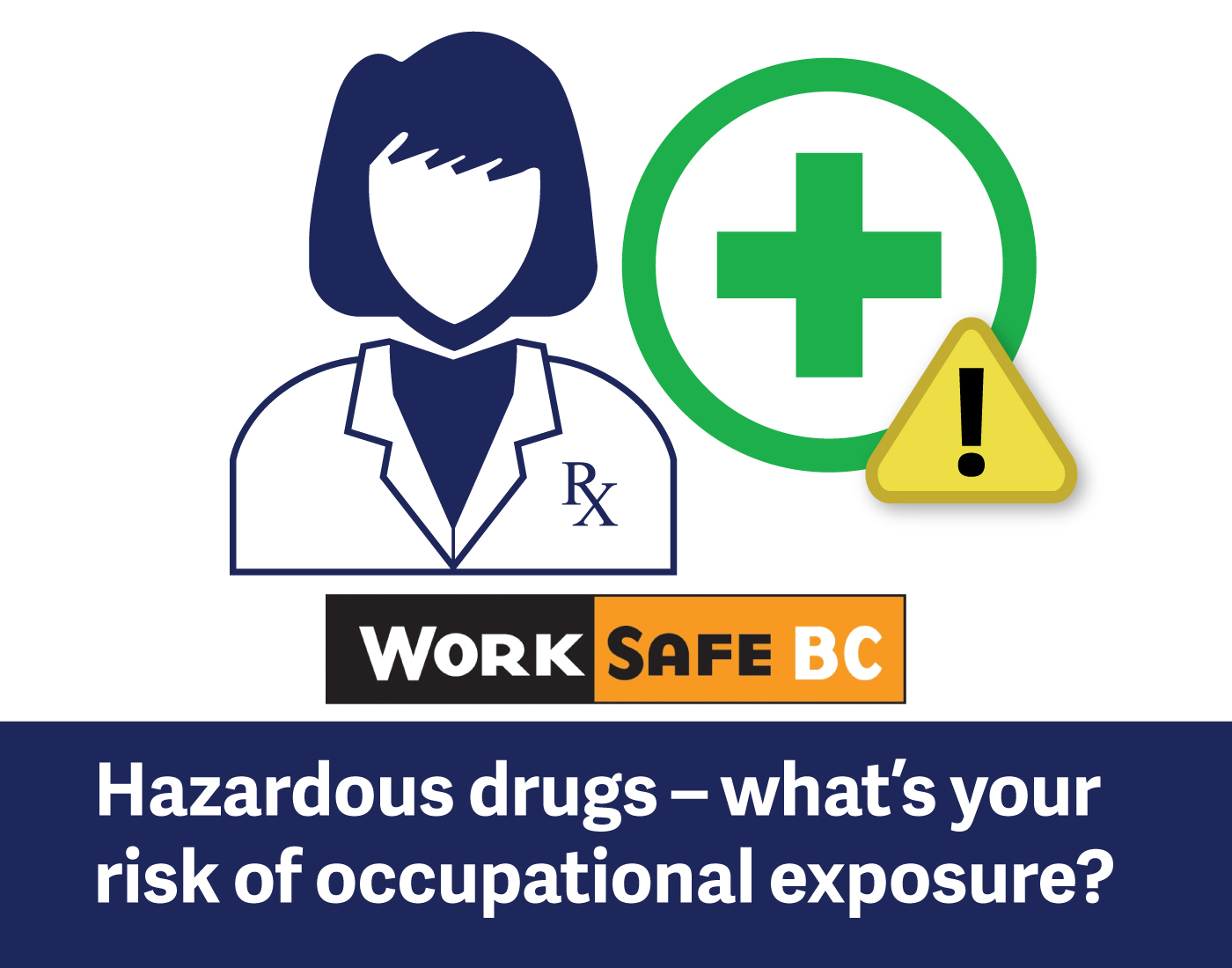Hazardous drugs – what’s your risk of occupational exposure?
Every day in BC, pharmacy professionals dispense important medications to the public. But, by working with and near many inherently dangerous drugs, they also put themselves at risk of chronic, low-dose exposure.
CAREX Canada currently estimates that 42,900 pharmacists, technicians, and assistants are occupationally exposed to antineoplastic agents. Approximately 30,200 of these individuals are community workers—this is the largest occupational group affected in Canada. Workers handling these medications are at risk of negative health effects that range from mild skin irritation to adverse reproductive outcomes to some cancers.

Source: http://www.carexcanada.ca/en/antineoplastic_agents/occupational_estimate/
Medications, such as methotrexate and tamoxifen, are traditional anti-cancer drugs that are now used to treat non-cancer-related illnesses. These medications are dispensed more frequently now from community pharmacies, increasing the risk of occupational exposure.
The National Institute for Occupational Safety and Health (NIOSH) classifies antineoplastic agents as hazardous drugs. This category also includes antiviral drugs, antibiotic medications, and some hormone-therapy and bio-engineered drugs. These are all recognized as high-risk medications that require special handling because of their inherent toxicities.
In BC, the Occupational Health and Safety Regulation (OHSR) governs the health and safety of workers; Sections 6.42 to 6.58 specifically address hazardous drugs. These regulations dovetail with NAPRA’s Model Standards for Pharmacy Compounding of Hazardous Sterile Preparations and Non-Sterile Preparations , but the OHSR focuses on occupational exposure instead of technical practices.
In 2016, WorkSafeBC inspected 11 community compounding pharmacies and central fill facilities in the Lower Mainland to determine whether sufficient controls are in place to protect workers from inadvertent exposures to hazardous drugs.
WorkSafeBC found that most of the inspected facilities lacked the following:
- Protective reassignment for pregnant and/or breastfeeding workers
- Drug-handling records for each worker
- Readily available spill kits
- Effective decontamination and cleaning practices to prevent further contamination
- Specific education and awareness regarding personal protective equipment, safe handling procedures, spill management, and adverse health effects from exposure
- A comprehensive exposure control plan to protect workers
So, what can pharmacies do to protect their workers?
First, conduct a workplace risk assessment to evaluate and document factors and conditions that influence the risk of exposure:
- Identify the hazardous drugs on site, noting quantities, concentrations, dosage forms and packaging
- Identify possible routes of exposure
- Document tasks and work practices associated with handling hazardous drugs
- Identify equipment used to handle hazardous drugs
- Review any past incidents of hazardous drug exposure
Following the risk assessment, document any current mechanisms used to reduce inadvertent exposure and then incorporate additional industry best practices and controls to specifically address any issues identified here by WorkSafeBC. The final step is to develop and implement a site-specific exposure control plan.
Reducing the risk of occupational exposure to hazardous drugs is an important issue for community pharmacies, but it all begins with increased awareness.
Additional information:
- Risk Advisory: Hazardous Drug Exposure (WorkSafeBC)
- Best Practices for the Safe Handling of Hazardous Drugs (WorkSafeBC)
- Webinar: Exposure to Antineoplastic (Cytotoxic) Drugs in Canadian Workplaces (CAREX Canada)
- List of Antineoplastic and Other Hazardous Drugs in Healthcare Settings, 2016 (NIOSH)
- Estimating Occupational Exposure to Antineoplastic Agents in Canada (CAREX Canada)
- Occupational Exposure to Antineoplastic Agents and Other Hazardous Drugs (NIOSH)
Prescillia (Percy) Chua, MSc(A), CIH, ROH, CRSP

Percy is an Occupational Hygienist, and is currently a Prevention Officer at WorkSafeBC. She has more than 13 years of experience in evaluating industrial and occupational exposures and work practices. She’s previously lead a research grant that focused on factors in the healthcare industry that influence the effectiveness of cleaning surfaces contaminated with antineoplastic drugs. Recently she’s completed work on control mechanisms in community pharmacies to minimize worker exposure to hazardous drugs. She has also coauthored several peer-reviewed research publications on inadvertent occupational exposure to antineoplastic medications.
Percy’s academic background is in medical pathology and occupational health. She’s committed to applying occupational hygiene principles in different industries, and educating workers on risks and mitigation techniques.
- Guest Post

 Share
Share



